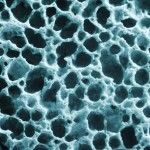
The aim of this study was to evaluate the efficacy of three different interventions (non-desensitising toothpaste, desensitising toothpaste and professionally applied dentine bonding agent) in reducing dentinal hypersensitivity over a 2-week, 3-month and 6-month- period in a dental practice setting.
In this practice based study patients adults (18-75yrs of age) with at least one sensitive tooth (as defined by patient) were randomised to either; a non-desensitising toothpaste (NDT), desensitising toothpaste (DT) or a professionally applied desensitising agent (DA). Patients were asked to refrain from using other desensitising agent prior to the study start and were provided with a standard non-desensitising paste. This was the same paste used for the NDT and DA group during the study period. Further supplies of paste and brushes were provided and the patients were explicitly advised that they were not to use any other dental products or toothbrushes during the trial. Severity of sensitivity experienced on a Visual Analogue Scale (VAS) at baseline, 2 weeks, 3 months and 6 months. Formal examinations were conducted at baseline and 6 months using a standardised air blast
- 75 subjects were recruited. There were 3 drop outs, two from the NDT group and one from the DT group.
- Dentinal hypersensitivity reduced significantly in both the DT and DA groups ( p < 0.0001)
- The reduction in sensitivity was sustained and continued to improve over a 6- month-period.
- The greatest reduction in dentinal hypersensitivity was recorded in the DA group.
- NDT paste – (Colgate Cavity Protection Regular, Colgate-Palmolive, USA)
- DT paste – (Colgate Sensitive Fresh Stripe, Colgate-Palmolive, USA)
- DA – (Seal and Protect, Dentsply, USA )
The authors concluded
The results from this study suggest that application of dentine bonding agents, to teeth diagnosed with dentine hypersensitivity provides the greatest improvement in dentine hypersensitivity at 2 weeks and 6 months. This reduction in dentine hypersensitivity is greater than that achieved by the desensitising toothpaste tested and a non- desensitising toothpaste.
Comment
We have previously highlighted another study (Dental Elf 30th Oct 2012 ) and previous reviews on this topic Dental Elf 4th Sept 2012, Dental Elf 11th June 2012)
Links
Gibson M, Sharif MO, Smith A, Saini P, Brunton PA. A practice-based randomised controlled trial of the efficacy of three interventions to reduce dentinal hypersensitivity. J Dent. 2013 Jun 18. doi:pii: S0300-5712(13)00152-8. 10.1016/j.jdent.2013.06.003. [Epub ahead of print] PubMed PMID: 23791771.

[…] Dental Elf – 17th July 2013 – Study suggests that use of dentine bonding agents provides the gre… […]